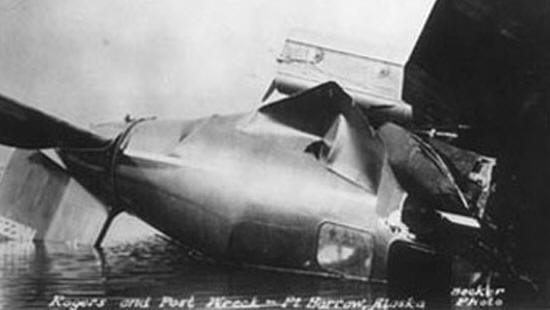|
|||||||||||
|
|
|
|||
|
|
||||
 |
On August 15, 1935, a private plane flown by both Wiley Post and Will Rogers, crashed just after take-off. The aircraft, a Lockheed Orion Explorer departed and just 50 feet off the ground began having engine problems. The aircraft crashed into the water at Walakpi, near Point Barrow, Alaska. Both passengers were killed. Will Rogers was well known for his worked in vaudeville as a cowboy rope-twirler. Rogers had joined the Ziegfeld Follies in 1915. Rogers was also well known for being in the motion pictures, radio shows and having a syndicated newspaper column. Wiley Hardeman Post (November 22, 1898 – August 15, 1935) was the first pilot to fly solo around the world. Also known for his work in high altitude flying, Post helped develop one of the first pressure suits. His Lockheed Vega aircraft, the Winnie Mae is on display at the National Air and Space Museum's Steven F. Udvar-Hazy Center adjacent to Dulles International Airport in Chantilly, Virginia, and his pressure suit is being prepared for display at the same location. On August 15, 1935, Post and American humorist Will Rogers were killed when Post's plane crashed on takeoff from a lagoon near Point Barrow, in Alaska. Post was born in Grand Saline, Texas (Van Zandt County), to farmer parents William Francis and Mae Quinlan Post, but his family moved to Oklahoma when he was five. His aviation career began at age 26 as a parachutist for a flying circus, Burrell Tibbs and His Texas Topnotch Fliers, and he became well known on the barnstorming circuit. On October 1, 1926, an oil field accident cost him his left eye, but he used the settlement money to buy his first aircraft. Around this time, he met fellow Oklahoman Will Rogers when he flew Rogers to a rodeo, and the two eventually became close friends. |
|||
| William Penn Adair “Will” Rogers | ||||
 |
||||
| Wiley Post | ||||
|
|
||||
|
Post was the personal pilot of wealthy Oklahoma oilmen Powell Briscoe and F.C. Hall in 1930 when Hall bought a high-wing, single-engine Lockheed Vega, one of the most famous record-breaking aircraft of the early 1930s. The oilman nicknamed the plane Winnie Mae, after his daughter, and Post achieved his first national prominence in it by winning the National Air Race Derby, from Los Angeles to Chicago. |
||||
|
|||
|
|
|||
| ?AvStop
Online Magazine
Contact
Us
Return To News
|
|||
|



